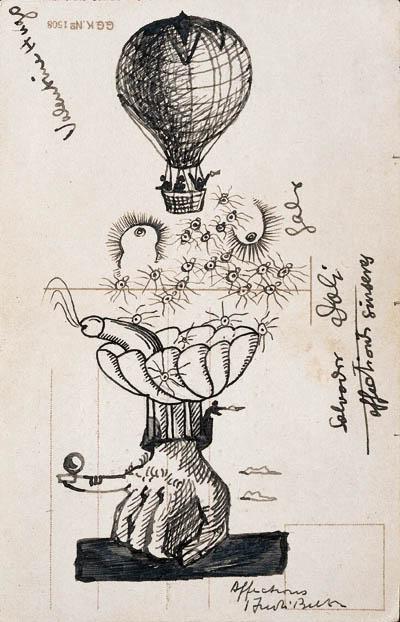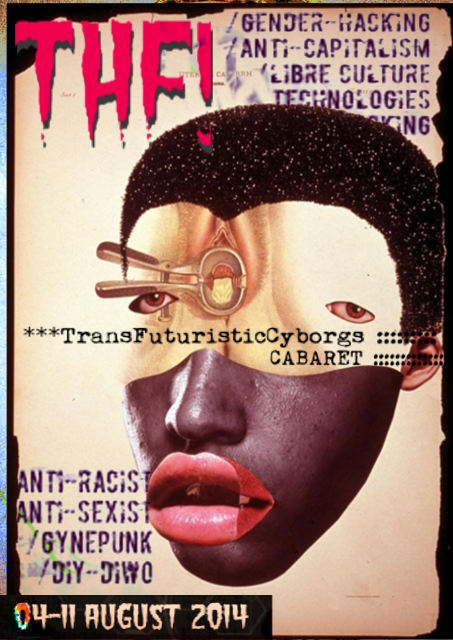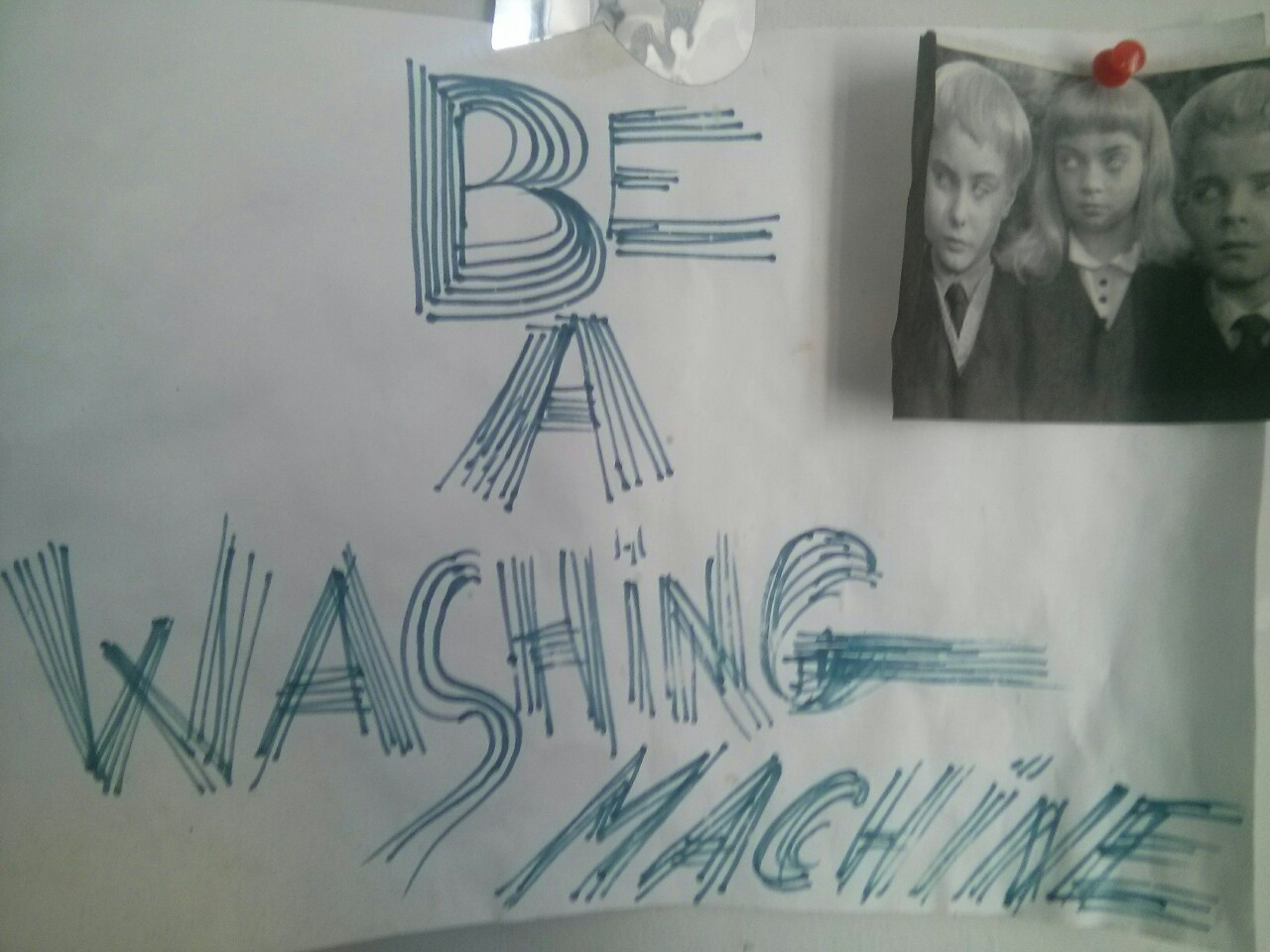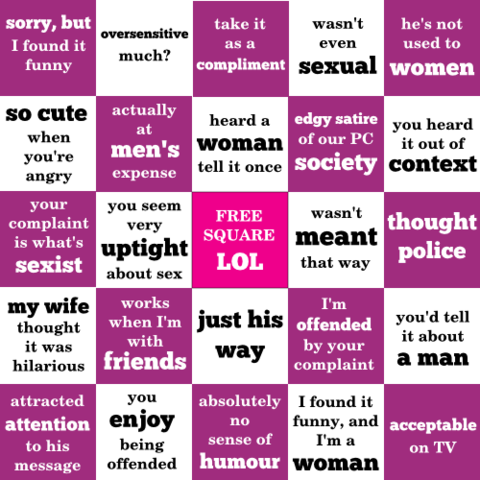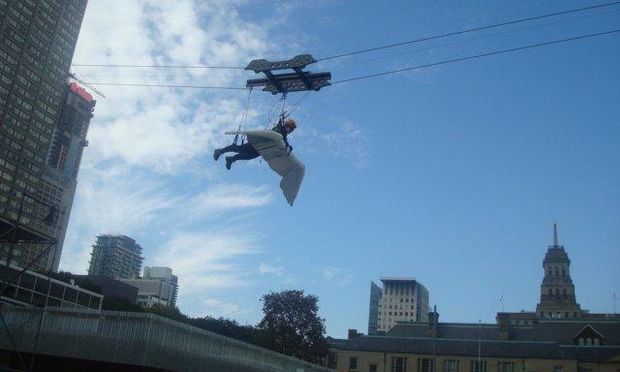Exquisite Corpse
{category_name}A brief note on the method used to compose this piece. The method we have chosen in order to collectively write this piece is known as 'exquisite corpse'. The first piece was written and then sent to the next contributor, and each subsequent person was only allowed to read what the person prior to them had written. You can read more about this method here.
Cover image is an illustrated exquisite corpse by Dali, Gala, Hugo and others.
Feminism is not just a theoretical approach to epistemology, but a guide for action to address the nature of gender-based modes of inequality and the subordination of women. Throughout the 1990s, the potential of the Internet and digital technologies to fundamentally reconfigure and reconstruct gendered relationships was a significant part of an emergent mode of {cyber}feminist thinking. Speaking to the potential of {cyber}feminism as a distinct mode of feminism Faith Wilding argued: “cyberfeminists have the chance to create new formulations of feminist theory and practices that address the complex new social, cultural, and economic conditions created by global technologies.”
Nonetheless the potential of the Internet, as a past proposition or future projection, is still very much up for grabs. Online, women are still subjected to many of the inequalities that exist ‘in real life’. In fact the Internet may not ‘leveled the field’ but in many ways intensified, accelerated, and extended material embodied inequalities into a so-called immaterial disembodied Internet. According to Kennedy, Wellman and Klement: “People’s social characteristics are not disposable baggage to be checked at the security counter when they go online.”
In a more optimistic reading, discussing this current ‘mold’ and the potential for change, Nina Power argues: “the speeded-up time of internet life also creates an impatience with the world as it is: now it is possible to organize, on or offline, modes of opposition that take up almost immediate umbrage with the world as it currently is. The possibilities for consciousness-raising, but also action, are now extended in almost every direction.”
Looking outwards, what are the boundaries of gendered inclusion and exclusion in digital spaces? Looking inwards, who are the ‘we’ of cyberfeminism? Who participates? How should they participate?
The Internet we know today has become a place where the (digital) targeting of feminist, queer and transgendered individuals abound; where cyberspace has been transformed into a consumption heaven and a space of constant economic and state surveillance; where dissident voices and actions are being controlled and tracked, and where algorithmic governmentality governs. In trying to think about how (cyber) feminism can be active on and about the Internet and digital technologies to challenge the current state of affair, I wonder the extent to which the materiality of cyberspace can help shed light on with this endeavor.
Highlighting the materiality of cyberspace helps to connect the dots between the seemingly immaterial digital age and its material impact on the environment (through the constant extraction of resources), the social (our relational networks are being transformed into commodities), the labor (the exploitative labor conditions in the factories that make our favorite gadgets), the governance (who governs the Internet?), to name a few. The New Spirit of (digital) Capitalism seems to be embedded into the design of technologies, and search algorithms are aligning their socio, economic, legal and political values into their seemingly “neutral” mathematical formula. Considering the grim situation of the materiality of cyberspace, how can we react and resist as (cyber) feminist without falling into dystopia? Can we try to mobilize (feminist) bottom-up agency outside of capitalist, patriarchal and racist frameworks? Can autonomous (infra)structures whether through code, free software, free hardware, design, space, convergences, etc. attempt to enable forms of separation and/or agencies from oppressive system of values? Might those (infra)structures support the self-valorization of those who take part in it?
In their new book entitled To Our Friends, the Invisible Committee calls on all activists to become politicized hackers while asking them to go and think beyond civil liberties. Their call to activists is about equipping themselves with the skills and knowledge needed to understand the ideology behind the tools we use on a day today basis (the financialization of our (cyber)lives) with the ultimate goal of social justice and transformation. Feminists concerned with these questions are also making this call loud and clear. Becoming a feminist hacker, maker or geek is not only about learning how to code, how to administer systems, it is also about being curious on how things are made, and learning to challenge and question how technology works and how technology impacts our lives and the lives of others.
To push our reflection further, it is worth looking back at the Luddites movement, a workers movement active in the 19th century England. The Luddites broke machines that they perceived would destroy their craftsmanship, and force them into unemployment and destitution. They resisted not all forms of technologies, but rather the technologies that they deemed harmful and against the greater good.
Therefore, as a way to resist the forces at play today and its deleterious impact on the social, the labor, the environment, can we think of investing our time and energy in developing and using autonomous (infra)structures that aim at challenging systems of oppression? Would that be a strong and pro-active response of how (cyber) feminism can be active on and about technologies?
In order to better understand the materialities of our (digital) present world-making, a speculative crossing of four topological vectors is proposed here for a (sintetic though) multilayered approach to the processes of social (often soft) mattering we are involved in.
Our ethic, politic, erotic and aesthetic systems, also from a technological point of view, are strongly affected by a dense repertory of gestures and agencies upon which we (humans) have only a tiny aprehension margin. This is why it might be interesting to first, when talking about these complex systems, declare a suspension of hierarchical cartesian judgement and storytelling (based on the subject-object dychotomy) and perhaps try to apply what ANT scholars have named the “principle of radical symmetry”. This will help on two fronts: 1) test de-anthropocentrified ontologies and 2) get away of essentialist approaches to somatic entities.
Also, and attending to the call of the Invisible Committee to think beyond civil liberties and go deep into the logistic composition of both hegemonic and counter-hegemonic equipments for life, a close look at infrastructures functioning can help us learn more about governance of the material world. Notions of scale and standarization in this vector are plausibly issues to deal with if an idea of autonomous shaping and caring of infrastructures is brough upon the table.
In realtion to infrastructures, there is a third tensor that clearly operates when dealing with power relations (in gender, class, race or species): that of the reproductive economies. Historically invisible, the tactics for sustainability, resilience and ultimate survival of communities are displayed by crucial agents who/which set up the basic conditions of possibility for life in its more radical materiality. Following that line of thought: how about talking about reproductive technologies in a wider sense?
Soft power is a key concept to understand relationality in our present ecosystems. This is why the notion of extitution brought up by Serres in Atlas can help in going beyond the inside-outside structuring of institutions and perhaps test a connected-disconnected logic. Daniel López insightfully proposes to think of this vector in terms of processes of extitutionalization. This shift could be useful get rid of pre-established forms (strong identities, social organizations, geopolitical foldings, etc.).
What implications would it have to articulate this vectors in an applied-to-case/situtated manner? Would it help in challenging the imposed hegemonic regulation of social matters? Can we start practicing critical and active dispossession in relation to technologies?
Now, what would be the best way to identify and put into practice the potential in each of these topological vectors and their crossings? How can we both aprehend and be dispossessed from present semiotic-material establishment to unfold other common-world-making possibilities?
I take dispossession to be a creative rejection of a prevailing hegemony, perhaps while being ejected from it. In current communities of technical practice, I observe notable sites of critical and active dispossession.
The first is an inchoate collection of rumblings and interventions that I conceptualize as “humane” cybersecurity. The cybersecurity community at large can be quite intimidating. In Geek Feminist communities, certain security conferences are known to be direly, demonstrably, unsafe spaces. Organizers are responding with alternative conferences catering to beginners, to activists, to women and gender-variant folks; the affinity lines are often fuzzy and fungible by design. Anti-harassment policies and codes of conduct (CoC) have become de rigeur; some people only attend conferences that have them. It is reasonable to view a CoC as a technology in its own right.
However, some in the cybersecurity community believe that their models of detection and reaction are insufficient to manage current and future threats to information accessibility, privacy, and trustworthiness. There is renewed will to engage with the concept of resilience in at least two ways: in the design of tools that are easy to understand and which protect users even if used imperfectly; and in large-scale efforts to re-direct the culture toward mutual aid, support, and inclusiveness.
The second site of dispossession that I observe is in the adoption of simple, jargon-free communication as a tool for inclusiveness and a reaction to performative expertise as an intimidation tactic. Communities have responded with many initiatives, some wildly successful, to welcome beginners and underrepresented technologists and support their learning and early successes in a safe space.
There is difficulty and fear in engaging with an area of deep expertise for the first time. But there is gratification and pleasure in cracking the code. There is also pleasure in riffing and indulging in highly specialized language with peers, testing new concepts, playing out at the boundaries of our knowledge and shared understandings. Far from being solely a tool for exclusion, this riffing and flow can build bonds in communities of practitioners and experts.
As a survivor of a community of technical practice whose enshrined principles include “RTFM” (“read the fucking manual”), I found it both terrifying and hilariously ironic to come to this essay project and realize that I was completely out of my depths compared to the other participants. [1] But in the process of reframing expert language in my own dialect, I was served by the very concepts I was discovering. I imagined shifting from subject-object into a frame of radical symmetry, and viewed my technical work in continuity with the work of STS scholars. It helped me find my way from fear, to difficulty, to gratification, and finally pleasure.
Perhaps in our efforts to introduce, invite and include, we need some protected, but wild spaces; invitations to engage fully and deeply with our unknowns, to attempt to stretch from fear to pleasure without the threat of strong repercussions if we fail; frameworks to offer each other access to our fields of expertise. Through play in these authentic but safe spaces,we might find concepts and strengths to bring back to our work.
[1] Upon receiving the essay I was to respond to, I emailed this to a friend:
"Oh fuck.
I'm living that nightmare where you're giving a talk at a conference
full of the best minds in feminism and STS and you realize that not only
are you in your underwear, but that it's Victoria's Secret underwear worn
unironically, and worse, YOU HAVE NO IDEA WHAT "MATTERING" MEANS!”
As resilience gains momentum as a handsome term of art for organizing life, how do we make place for play? Although often security and resilience are said in one breath, in fact, security is swiftly being exchanged for resilience. As if it was not confusing enough that a term to describe attributes of materials in the 19th century, would later be used to describe complex ecological phenomena and market (disaster) magic, we are now being served resilience under the auspices of “the cyber” [1].
Outside of technical circles the critique of “resilience” is abound. The ongoing project of resilience in the US and elsewhere “transforms resistance from being a political capacity aimed at the achievement of freedom from that which threatens and endangers, to a purely reactionary impulse aimed at increasing the capacities of the subject to adapt to its dangers and simply reduce the degree to which it suffers.” As Sarah Bracke puts it, living in this regime of resilience, the skill of apprehending the future as a cycle of disaster and recovery is seen as crucial to resilient-self-formation — a formation that thwarts the developing of skills of imagining another future [2]. In other words, resilience frames the world we live in as a given, leaving us with the option of (oh so proudly) adapting to its conditions, instead of questioning its premises in the quest for another possible future.
Burdened to make-do with our apparently predestined futures, what can play offer us? After all, what is play if not the witty performance of another future, and even another now? If so, is there a way to resist resilience to demand security and responsibility from governments and corporations and at the same time to “secure” play or at least let play be more than the leisure of the able-privileged?
What’s nice about play is that it can be many things: to play an instrument, to play in a make believe world, to play as in a game, to maneuver and so on. Play, as in playing an instrument, has been a central part of many of the tech communities that I have had the privilege of participating in. Hacker/Maker spaces, Media Labs, hacker conferences and camps, and some media and art festivals are for me places of play in this sense.
These are though peculiar kinds of play. Participation requires some sort of techno-social-creative capital and things work out much better if participants have freed themselves of wage-labor. The intentions are noble, the lightness of the formats much welcome, and the dedication of participants make these events great fun. Yet the focus on technology, autonomy and ingenious creativity can easily serve to erase the costs of infrastructure that makes the play possible in the first place. It is then not surprising that participants can forget that this play is most often sustained as such because it can align well with a variety of market interests and post-colonial modes of production. Even then many of these sites would see themselves as sites of resistance to existing technological orders. But this does not undo the requirement that one has to adapt the material, geographical and bodily conditions to fit the play. It is fulfilling when people can do that, but like resilience, it burdens the individuals with managing their ways into the play.
Maybe it is more productive to look at other meanings of play, in what to many is a “make-believe” world, that is not disconnected from the material one, and one that integrates satirical and serious maneuvering? I feel that recent gatherings around “magic codes”and “haunted machines” are great steps in a prickling direction. I am excited about them although I wonder how in these exciting beginnings we can avoid the same erasing of the histories that happen outside of the colonial and colonizing imaginary of (sub-)culture. Inspired by these two transcendental events, for example, I wonder if it is possible to imagine a play stretched in time and place, that includes the tinkering ladies of Foxconn factories and, why not, the ghost of Mao? “Include” in fact is maybe the wrong word. Instead of appending bodies to technology gatherings or imagining “diverse” futures, I am wondering if we can find the modesty to join the play with those who have courageously been performing and embodying the now. I think we can find great inspiration in queer communities, and here I use Jasbir Puar’s more generalized concept of queerness, and her appeal for cyborgian-godesses. A call that Mattie Brice also puts so nicely into words, that can include life, death and ghosts. These could be initiatives by transgender communities, communities caught in violence or disability activists, that cannot and do not put their bodies behind and cut into the crossing of politics and technology in magically embodied ways. Irony will always be powerful, and play embodied can provide the basis for maneuvers that dispel the myth that is still the holy grail of tech activist communities: that technology is of 0s and 1s and can be free.
[1] Some warn that “resilience may be the new black” or as some like to say, “resilience may be the new cyber”, but I suspect that US government agencies, in partnership with commercial partners, may disagree now that they have secured the linguistic stability of the word cyber by publicly elevating it to “the cyber”, the fourth domain that must be protected using military forces. If anything, the cyber is the new cyber.
[2] Bracke, Sarah (2015) “Bouncing Back. Vulnerability and Resistance in Times of Resilience,” in Judith Butler, Zeynep Gambetti & Leticia Sabsay (eds.) Vulnerability and Resistance. Towards a Feminist Theory of Resistance and Agency. Durham: Duke University Press.
In thinking about resilience, I am reminded of black feminist Audre Lorde’s statement: “Caring for myself is not self-indulgence, it is self-preservation, and that is an act of political warfare”[1]. Here, resilience is of the corporeal body (Lorde’s had breast cancer) and of the self in a social system (needless to say, a black lesbian woman, in Lorde’s time as in our own, experiences particular obstacles in her quest to exist, to persist, and to thrive). For Lorde, self-care offers the possibility of survival: to preserve oneself when under social, environmental, and (auto)corporeal attack is to not give up, to fight back, to win battles if not wars. From survival flows the threat and promise of further political imagination and additional political action.
Resilience means: to be elastic, to spring back into shape, and to be able to recover from hardships or difficult conditions. It has similarities to and difference from durability (possessing the ability to withstand wear, pressure, or damage) and robustness (strong, healthy, vigorous, sturdy). Its defining qualities have to do with being flexible, being subject to threat, and being quick to recover.
As we all intimately understand, even in cases where less than our very mortality is on the line (Lorde’s body did not survive her cancer), bodily resilience has limits. What parameters for resilience can we imagine that exceed (but include) bodies? What social, corporeal, technical, and political formations are most resilient—and most valuable?
As Seda suggests, one way to add value to resilience is to add play: then resilience can begin to mean more than “withstanding attack” and live up to its elastic, flexible, and less instrumental qualities. Practices of play might include political speculative design. It is such practice that imagines artifacts like the “feminist server.” If someone were to build a feminist server, it would exist as a material artifact--but it can never be just a technical artifact. It necessarily incorporates the individual and collective thought, bodies, social experience, imagination of activists, feminists, and techies who live, work, and play in a social and political context where it makes sense to imagine a community-run and -controlled, “autonomous in the sense of deciding her own dependencies” machine [2] that “enables new agencies.”
Critical technical practices should never mistake a technical artifact that arises out of them as standing apart from the social relations that produce it, or into which it might intervene. Technology is not the same as social power (and technologies alone can never bear the weight of redressing social inequalities). But it can be a useful site around which to reimagine relationships within communities, between people and technologies, and perhaps especially amongst people whose social positions and experiences afford them special opportunity for insight into alternative terms of association. [4] A few other artists and technologists who play and speculate wonderfully include Chris Csikszentmihalyi; Julian Bleecker; Natalie Jeremijenko; and Phoebe Sengers. Speculative design centered around feminist politics is one strategy (of many) for becoming resilient in a mode that recuperates and exceeds survival, striving for flexibility and flourishing as political actions. Such playful practices may not resolve into wholes or outcomes (or whole outcomes), but this does not undermine their seriousness or their value.
[1] While seeking documentation for this quote, I found it in truncated form, “Caring for myself is not self-indulgence, it is self-preservation,” attributed to American talk show guru Oprah Winfrey! As if we needed reminding, the line between consumption and political warfare would seem a thin and troubled one under early-21st-century capitalism.
[2] As its designers state, a feminist server “[t]reats technology as part of a social reality.”
[3] Here I nod to Donna Haraway’s discussion of Chela Sandoval’s “oppositional consciousness” and “definition [of “women of color”] by conscious appropriation of negation,” in which people’s affinities form not through naturalized association but through conscious coalition and political kinship. Simians, Cyborgs, and Women (Routledge, 1991): 155-156.
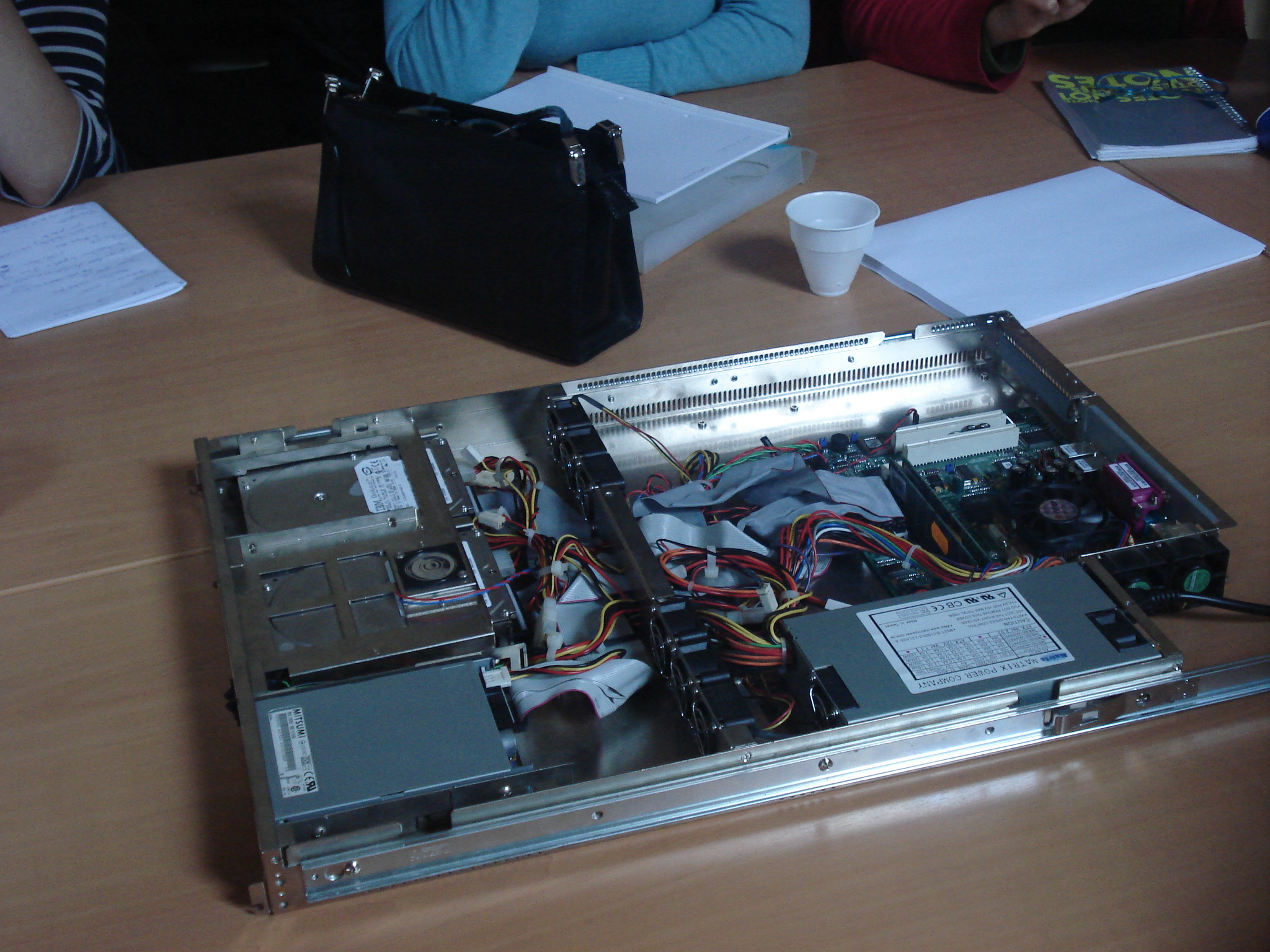
At the Feminist Server Summit [1], Juliane told the story of Amaya [2], a server collectively run by a group of women aligned with Free Software. “Last year it stopped” she explained. “Finally we didn’t host any other organisations, we were in auto-training mode. We were working so much on administration, security updates...there was too much maintenance and not enough content.”
Did she mean to say that we were too much focused on practicalities? Or was she pointing at the tension between thinking and doing that might have been the reason to put the project on hold?
I discovered the desire for a Feminist Server at the second edition of Digitales [3]. At these 'digital meeting days' Laurence brought together women working with networked technologies (system-administrators, cyberfeminists, net-artists, students, developers) and I was one of those. “It was putting people, words, machines together in the same room, and the people being in this place could have a sensation or could understand something, and go away with this understanding.”
When Digitales transmuted into Les Academies du Samedi [4] we converged around a shared interest in making the Feminist Server a reality while figuring out what a server could and should be. We branched our second-hand machine to the network and started learning about command line, domain name servers and Apache configuration files and organised performative sessions deconstructing the patriarchal vocabulary of 'client' and 'server'.
We feminised the French word for Saturday and became Samedies: Femmes et logiciels libres, a losely knit self-learning group that attracted women with diverse interests and skills. “It is a political liaison which is about re-appropriating tools, and an attempt to imagine a political universe where we are ourselves implicated in the things we do and make, and where we collectively can discuss this future.” [5]
Our commitment to Free Software had and has much to do with how it establishes conditions for action and reflection. When all users have the right to run, study, modify, and distribute source code for any purpose, this creates an environment where speculative design can flourish. But its technocratic focus combined with a boundless trust in meritocracy makes that imaginative practices are more often than not met with suspicion. A woman caught speculating in this context, obviously runs the risk of re-enforcing the cliché that instead of producing valid code, all she does is dream about it. The Feminist Server operates on this tension.
In 2012, we put the project on hold. Once we had cleared out the initially interesting confusions between those who joined to administrate a server that could host webservices for sister projects, and those that were mainly interested in Amaya as a figure of political speculation, it was time to move on.
A year later, Constant organised The Feminist Server Summit to see if we could reboot the desire. We asked several alternative server projects to present their histories and plans, summoning in fact many Feminist Servers. A discussion with Ushi and Reni sparked A Feminist Server…a retro-manifesto written more than ten years after the idea had surfaced. This text was used by Alex, Reni and Marthe for the re-launch of Anarcha-server, managed according to an ever-evolving set of feminist principles, and currently hosting working tools for initiatives related to Transhackfeminism! It made an appearance as “supporting actant” after Reni hosted a discussion of The Feminist Server while contributing to the re-launch of Systerserver that came out of the Eclectic Tech Carnival network.
The circular and ever-extending histories of The Feminist Servers link together a heterogeneous group of people who at different times and places decided to care for it's technical reality but also for how it could grow as an idea. If there is such a thing as a politics of speculative design, than it would be that it invites us to 'act where there are no charters', creating a continuous movement between imagination and concrete, situated action, in order to extend the parameters of change.
[1] The summit was organised by Constant as part of the four day event Are You Being Served? (Brussels, December 2013). Only some of the invited server projects defined themselves explicitly as feminist and preferred 'autonomous', 'alternative' or 'collectively run'. Participants included Marthe Van Dessel, Peter Westenberg, Reni Hofmueller, Juliane De Moerloze, Femke Snelting.
[2] The server is named after Amaya Rodrigo, a feminist developer who started out contributing as a translator to the Debian operating system and is now a software maintainer for the same project.
[3] 'Digitales' refers to digital technologies, but also to fingers, organism and poison. The event was initiated by Laurence Rassel who worked at the time for ADA, a Belgium network for women and new technologies and with Constant, association for arts and media. Digitales took place in Brussels and Antwerp in 2001, 2002, 2004 and 2006. The media archive contains recordings of activities and interviews with participants.
[4] Les Academies du Samedi (The Saturday Academies) launched in 2006 and took place every five weeks in Interface3 and other relevant places until 2012.
[5] Interview with Juliane de Moerloze, We will get to know the machine and we will understand. In: Conversations. Constant (Brussels, 2015)
